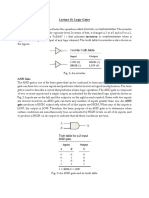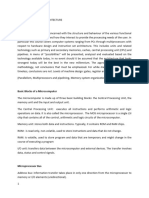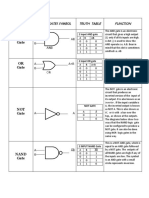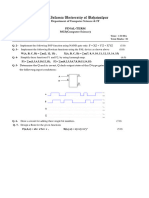0% found this document useful (0 votes)
8 views8 pagesBasic Logic Gates Using Discrete Components
The document explains basic logic gates, including OR, AND, NOT, EXOR, NAND, and NOR gates, which are fundamental components of digital systems. Each gate's function is described with corresponding circuits and truth tables, illustrating how they operate based on different input combinations. The document emphasizes the binary nature of these gates, where inputs are represented as 0 and 1, corresponding to low and high states.
Uploaded by
mahmutersinCopyright
© © All Rights Reserved
We take content rights seriously. If you suspect this is your content, claim it here.
Available Formats
Download as PDF, TXT or read online on Scribd
0% found this document useful (0 votes)
8 views8 pagesBasic Logic Gates Using Discrete Components
The document explains basic logic gates, including OR, AND, NOT, EXOR, NAND, and NOR gates, which are fundamental components of digital systems. Each gate's function is described with corresponding circuits and truth tables, illustrating how they operate based on different input combinations. The document emphasizes the binary nature of these gates, where inputs are represented as 0 and 1, corresponding to low and high states.
Uploaded by
mahmutersinCopyright
© © All Rights Reserved
We take content rights seriously. If you suspect this is your content, claim it here.
Available Formats
Download as PDF, TXT or read online on Scribd
/ 8





















































































